Idaho & Blaine County COVID Updates
The time-line of Idaho’s state government 4-part economic plan seems to be formed on logic the virus will acquiesce to mandated phases. It is careless and could be dangerous. Idaho does not have the COVID-#’s, testing, or tracing, to support re-opening at this time. -dayle
[Getty Images]
‘FDA Comm Scott Gottlieb said that the country will need to initially conduct up to 3 million tests per week to reopen. A separate estimate from Harvard researchers says the U.S. must conduct b/t 500-700,000 tests per day by mid-May to begin reopening.
The new report, released by Harvard University’s Edmond J. Safra Center for Ethics on Monday, emphasized the need for a massive scaling up of testing coupled with a robust contact-tracing program in order to reopen the U.S. in a way that avoids future shutdowns. Its top recommendations include a call for the nation to deliver 5 million tests per day by early June in order to ensure a safe reopening of portions of the economy.
Their call for 20 million daily tests is in line with recommendations from Nobel Prize-winning economist Paul Romer, who said earlier this month the U.S. needs to administer 20 million to 30 million tests per day.
Gottlieb said the the country likely wouldn’t reach broad-based testing capacity until September.’
Governor Brad Little encouraging ‘peer pressure’ to follow guidelines, not state-wide enforcement.
Don Day at BoiseDev:
Gov. Little: “We will not progress through the stages of reopening if people do not take personal measures to limit their exposure to coronavirus. That means stay home as much as you can.”
The four-phase plan starts to reopen the state, but Litlte stresses Idahoans should wear protective face coverings, remain six feet apart from others, and continue to wash their hands.
Stage 1
This phase will start May 1 at the end of the current stay at home order.
- Businesses should maintain six feet distance for employees and customers. Any businesses that open should have sanitation protocols in place.
- Most retail businesses could reopen, except:
- Bars & nightclubs
- Restaurant dining rooms
- Indoor gyms
- Hair salons
- Large venues like movie theaters and sports theaters.
- Houses of worship can reopen.
- Daycares can also reopen.
- Employers should continue telework where possible.
- Visits to senior living facilities and facilities like jails are prohibited.
- Minimize travel.
- Out-of-state visitors should self-quarantine for 14 days.
- Vulnerable Idahoans should avoid interacting with the public.
[For additional stages, follow the link.]
Stage 2 May 16th.
Stage 3 May 30th.
Stage 4 June 13th.
Blaine County
“If you missed the second Virtual Town Hall, you can watch the recording from the Blaine County webiste here – co.blaine.id.us/CivicAlerts.as
Summary
Harry Griffith from Sun Valley Economic Development [SVED]:
- Buy Local
- Share Ideas
- Embrace Change
Recovery could take two years in a new 2.0 local economy.
2nd home owners will help our local economy.
We will see developments of new business models in the valley.
Some businesses will not be able to recover, others will scale back.
Teleworking could increase across the valley bringing in new teleworking businesses.
We will see periods of ⬇️ wages & hours.
LOT receipts are ⬇️.
At least eight large community events cancelled valued at $20 (m) into the valley; also affected are smaller events and non-profit fundraisers.
We are looking at a “devastated economy.”
The summer will look very different from past summers.
2,000 unemployment claims in the valley…23% unemployment rate right now.
Medical
Blaine County could see another wave of COVID in the fall.
Must stay diligent to hygiene and physical distancing guidelines, or #’s will increase quickly again.
[Getty Images]
‘A fatigued health care worker takes a moment outside the Brooklyn Hospital Center in April. Many hospital workers these days have to cope with horrific tragedies playing out multiple times on a single, 12-hour shift.’
“Appreciate the 8 pm howling.”
5% of the county has been tested…approximately 1,300 tested.
Questions remain:
How many may have been impacted by the virus and not know?
Will some become sick again?
Need more testing and contact tracing.
Elective surgeries will be phased in again.
COVID doesn’t “flip a switch”…we need to “turn the dial.”
[dayle: Some health care models and economists illustrate COVID and infections as a ‘W’, with peaks and valley’s dependent upon future infections and economic fallout.]
Possibility: Surveillance tracking and testing not beholden to bias, i.e., those who can afford testing, or have access to testing…want to be tested.
Sun Valley Institute/Blaine County Recovery Committee
https://www.blainerecovery.org
Blaine County has been disproportionately hit by COVID-19 and associated economic collapse, with some of the highest per capita infection rates and an economy primarily dependent upon tourism in a rural, isolated community with tremendous income disparity – nearly half of county school district students receive reduced-cost or free school lunches, and 1 in 3 residents is food insecure.
“Pulling TOGETHER to come through the COVID-19 crisis stronger, wiser and more resilient than ever!
Blaine Recovery presents available resources to help individuals, businesses and organizations with recovery –a coming together of our community, for our community.
THANK YOU to all who participate – giving and receiving, supporting and sharing – strengthening the fabric of our community.”
Blaine County community leaders joined to create a long-term recovery team, the Blaine Recovery Committee, to develop a recovery plan and coordinate local resources in response to the COVID crisis
Aimée Christensen, BRC Steering Committee and Executive Director of Sun Valley Institute, who is coordinating the effort.
Contact: Mike Gordon Blaine Recovery Committee Coordination: 208-309-3049.
“Blaine County best-practices for a successful re-opening.”
- Identify
- Mobilize
- Future
Three subcommittees:
- Business Sector
- Non-Profit Sector
- Personal Sector
All information is available in Spanish, thanks to the supportive efforts of Hector Romero.
BRC Steering Committee member, Mike Higgs, Executive Director of Blaine County Chaplaincy, said, “The journey up the river to recovery is one we must take together. The Blaine Recovery Committee will help get more oars in the water, pulling together, so we will get there more quickly without leaving some behind!”
‘The Flourish Foundation announces the Community MasquerAID initiative. Born out of compassion in action, this meets an essential and on-going need for personal use protective face masks in the Wood River Valley during COVID.
Relying on laser-cutting technology from Beyond Wood, the skill and passion of local sewists, engagement of Compassionate Leaders, guidance from Providence Health and other health care providers, all MasquerAID masks are washable and manufactured locally.’
[To learn more and to donate, follow the link.]
flourishfoundation.org/masqueraid
Non-profit news organization ProPublica interviewed experts and frontline officials from Italy, Germany, Spain, Singapore, Taiwan and South Korea. “Of all of them, we found more commonalities than differences. So, these are the 7 things we must do before we open up America:
1. Build an army of contact tracers *Every* expert we talked to said it’s important to know exactly where the virus is spreading. The only reliable way to do this is via “contact tracers” who can track down the contacts of anyone who tests positive.
While this sounds like an obvious step, it comes with demanding logistics that few — if any — U.S. states are able to carry out right now, such as:
“It usually takes four or five people over three days to do one full contact trace, on average,” Andy Slavit, former head of Centers for Medicare & Medicaid Services during the Obama administration. He said California (40M pop) could need up to 20k contract tracers, depending on circumstances.
2. Test. Constantly. You’re sick of hearing about it, we know. BUT. Our experts agreed that the inability to do widespread testing for the virus is the central reason it has spread so widely in the U.S.
Isolate people w/ suspected infection from their families. This is a really tough one. It goes against everything the family-centered American society supposedly treasures. That said, what we’ve learned in Italy, Taiwan and our country is sobering.
NY authorities originally told anyone with symptoms to “self-isolate” in a single room in their home for 14 days, avoiding contact with other people living in the same place. But that ignores a lot of fundamental facts of life. What about people who:
-live in single-room apartments – don’t have two bathrooms. – aren’t meticulous about wiping down door handles or wearing gloves and masks when they wash dishes The result?
In city after city: horrifying stories about one parent, then a second parent, then the children ending up dead or ill. Separating people for 14 days is tough. It would be massively unpopular. Many experts suggested using hotels to isolate those who test positive.
(Also could be helpful for the hotel industry).
4. Protect health care workers. Protect. Your. Healthcare. Workers. One of the lessons from Wuhan and Italy is that you have to be utterly meticulous about protecting doctors and nurses. If you don’t, the hospitals become a vector for infection and you lose the frontline people. Or worse — If you need them to handle a second wave of infections, even a smaller one, they may stop coming to work. You need to stockpile PPE & supplies before reopening. This is not optional.
5. Don’t try to go back to “normal”. Our goal isn’t to get back to a pre-pandemic way of life, but instead to employ whatever tools it takes to keep transmission as low as possible while restarting your economy. This means:
-masks
-temperature checks
-6-foot distancing
Things that are relatively new concepts for the US, and are already proving unpopular. Too bad, our experts said. These measures save lives.
6. Watch out for the 2nd wave The initial success stories in fighting COVID-19 — Singapore, Hong Kong, South Korea — all saw a rise in cases in March. Even after getting new cases down, you have to maintain constant vigilance to keep the rate low. What will this take?
For starters, a national system tracking flu-like symptoms. Epidemiologists call it “sentinel surveillance.” It’s the kind of system we should have had in the first place…
And lastly…
7. Communicate. Clearly. Constantly. ***Governors and other state leaders:*** One thing that came through in many of our interviews around the world was the importance of communicating clearly and consistently about the actions you take. You’re going to have to persuade voters to do things they won’t like at a moment of unparalleled partisan rancor, record unemployment, disarray in your state’s traditional media outlets and divisions among eminent scientists.
After those interviews, we asked American experts If they thought we could do it. Their answer? None of you are close to being ready. All of the above are things that America’s governors need to do and take seriously.
ProPublica is not done investigating the spread of coronavirus and those accountable for saving the American public from further needless deaths.
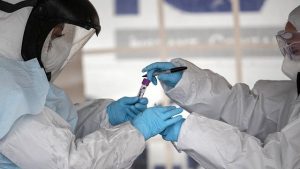

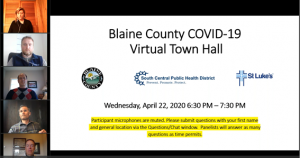
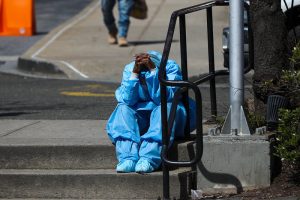

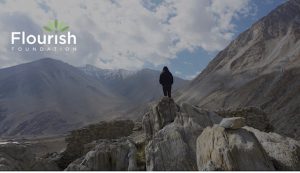
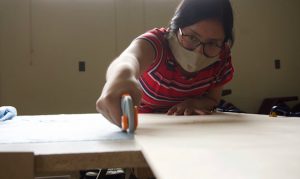

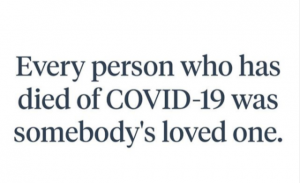
Leave a Reply